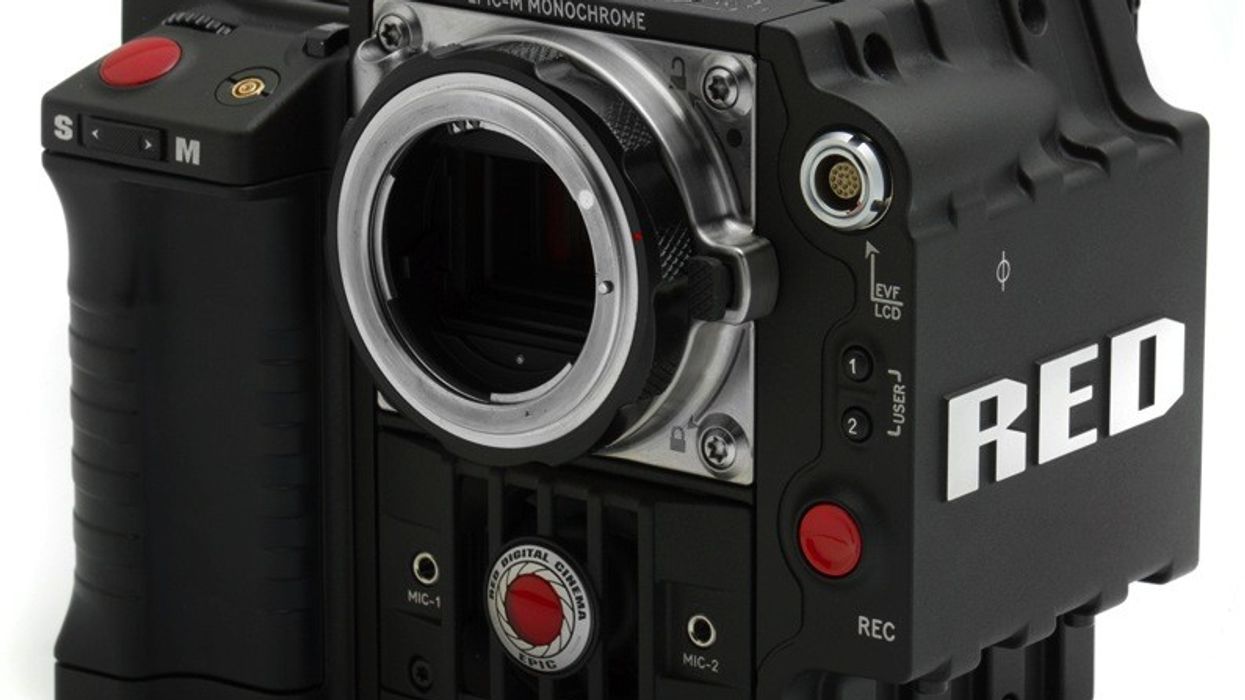RED EPIC Monochrome vs. RED EPIC: a Jaw-Dropping Black and White Comparison

Ever since we first talked about RED's new black and white only EPIC Monochrome cameras, and then even showed footage, many have still been unsure why a product like this exists in the first place. Why not just take the RAW image from the EPIC and convert to black and white? Shouldn't that give the same quality? After all, you're already starting from a set of RAW images that simply contain metadata. Well, the answer is a definitive no, and a comparison between the Monochrome and non-Monochrome versions of the camera will show you exactly what's going on, and why this is probably the sharpest and cleanest black and white moving image you've ever seen.
First, it will probably help to explain how most CMOS sensors are designed. All traditional CMOS sensors are monochrome, believe it or not. To get a color image, they have color filters over each pixel arraigned in a particular grid called a Bayer patten. Here is what that looks like:
As you can see, in this pattern, there are holes in the information. Since each pixel does not have a red, green, and blue color value attributed to it, it must be interpolated from pixels near it in order to find the missing colors. This is one of the reasons people talk about a camera losing resolution after "debayering" in post, which means that an interpolation method is used to fill in the missing information, and it also means the original resolution -- 2K, 3K, 4K, 5K -- will never be able to resolve that amount of detail. This is why if you really want to resolve a certain amount of resolution, you must oversample -- meaning with a single CMOS camera you start with a far higher resolution than you need for the final product.
So with that out of the way, what happens if we take off the color filters? It means we no longer have to interpolate any information. Since we're starting in monochrome, and staying that way, each pixel is represented 1:1 in the final recorded media. This means not only higher resolution, but also finer tonality within the image. Still don't believe me? John Marchant posted on REDUser about some sample images he took with both a regular EPIC converted to black and white in post and an EPIC Monochrome camera. Both were set to ISO 2000 (which is the native ISO for the EPIC Monochrome since the color filters are removed and thus sensitivity is improved). Here are the testing procedures for the 100% and 200% crops below:
All material was shot at the Monochrome's default meta settings, ISO2000. The Epic-X was also at its default settings except for a 0% saturation look, and an ISO bump to 2000
Matching lenses, f-stops, compression etc were used, and zero sharpening or similar was added. The crops you see are at 100% or 200% nearest neighbour, having been rendered as TIFFs from RCX and passed through Ps CS6 for cropping.
You'll see for yourselves that at matching settings the Monochrome comes up a touch brighter, has far prettier compression and noise characteristics, and benefits greatly in sharpness too.
I believe there are crisper results still to be had - we only tested on a mix of cheap and available glass: original RED 18-50, Canon 24-70L, Nikon 85mm Ai-S.
There's also a big fat .psd file of a full 5k frame, with three layers - 800 ISO untouched EPIC-X frame, the same at ISO2000 in mono, and the Monochrome frame. You'll just have to bear my ugly mug in the centre of frame, so apologies in advance for the lack of pretty girls / awesome stuff in the shots.


If you haven't already seen the video shot that we posted earlier with the Monochrome, head on over and check it out. Jim Jannard also posted a sample image and video from a recent shoot. Click on the image below for full size (which is compressed and downsampled), or click here for the highly compressed web video showing some motion with the camera.
Black and white might not be as popular anymore, but with a 5K camera capable of a native 2000 ISO that is virtually noise-free, there are many situations where I could see people using it. When the Dragon sensor upgrade is released, there will also be a monochrome version of that sensor, and if low-light performance is improved by a factor of 2.5 on the black and white version (just like the current version), it means the Dragon Monochrome camera would have a native 5000 ISO. Black and white or not, 6K at a clean 5000 ISO would render moving images unlike any that anyone has ever seen before. (Keep in mind we won't know the final sensitivity of the monochrome version until the sensor is ready for prime time.)
While prices for this version did come down, it's still relatively expensive to buy at $20,000 for the brain, especially for a camera that is only capable of black and white images. That means it's definitely going to be more of a rental for most. I can see this camera being used extensively in the fashion industry, but personally I am really interested in seeing what the new Dragon Monochrome might mean for an available-light shoot at 6K in black and white.
If you want to check out the photoshop file of the above samples from John, head on over to the website or use the link below.
What do you guys think now after having seen some samples? Is this a camera you might consider renting at some point? What about purchasing one?
Links:
[Bayer pattern image courtesy Wikipedia]















